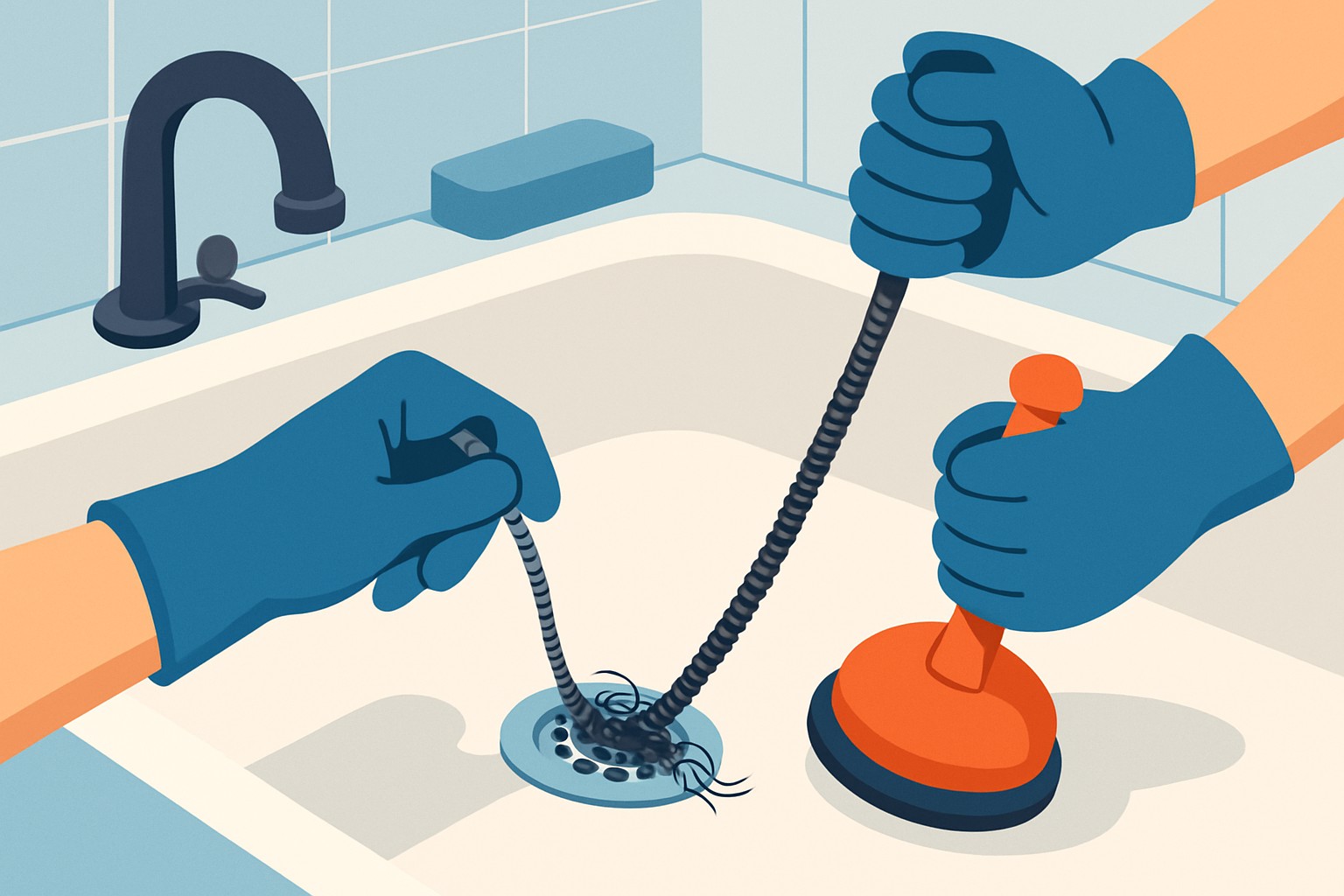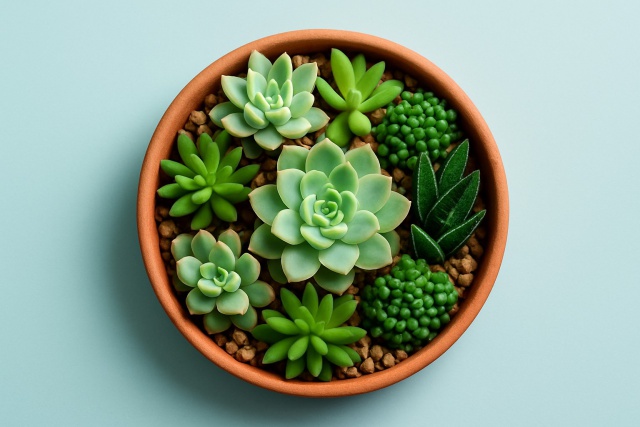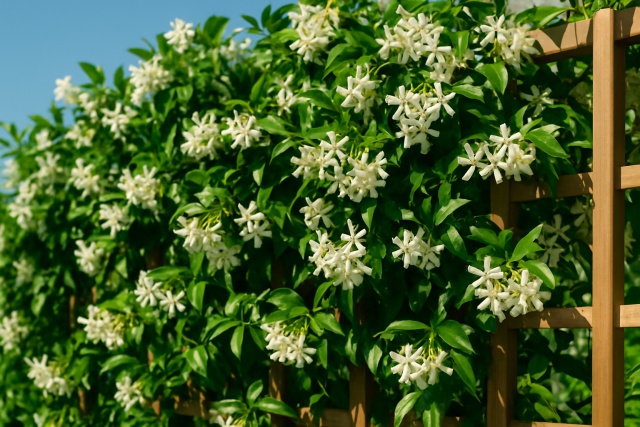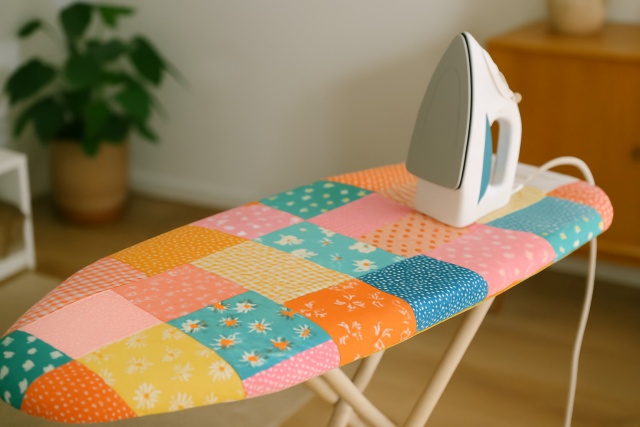Tub Clogged Won't Drain - How to Clear It Fast at Home?

A tub clogged and won't drain is a common yet annoying problem in many households. Often, it’s caused by a buildup of hair or soap scum clogging the drain. This kind of blockage can throw a wrench in your daily routine and if left unattended might lead to costly plumbing headaches down the line.
Common Reasons Why Your Tub Gets Clogged and Just Will not Drain
Knowing what causes a tub to drain slowly or not at all is key to getting the problem sorted. More often than not, clogs show up because hair or soap scum and dirt build up and block the drain or pipes.
- Hair tends to gather into thick clumps that act like little catchers' mitts for other debris and slow down the water flow.
- Soap scum and residue build up bit by bit and quietly shrink the pipe diameter until it’s a tight squeeze.
- Mineral deposits in hard water areas often set up camp inside pipes causing frustrating blockages.
- Foreign objects accidentally dropped or flushed can get stubbornly stuck in the drain and turn a quick fix into a mini drama.
- Damage or deformation to pipes can create spots where water pools and clogs start to form upstream like traffic jams in your plumbing.
- Problems with venting throw off the airflow plumbing relies on and slow drainage like a traffic cop waving cars to a halt.
How to Tell If Your Tub Is Clogged (Without Losing Your Cool)
Clogged tubs often come with more than just slow drainage—there’s usually a little warning signs waving at you if you know where to look. Keeping an eye out for these can help you size up how bad the situation is and decide on the best fix without flying blind. From weird gurgling sounds to unpleasant odors, these subtle hints usually spill the beans on what’s behind the blockage.
- Water takes its sweet time to drain or pools noticeably at the bottom of the tub after use.
- Water stubbornly lingers in the tub, showing no real signs of making an exit.
- The drain starts to gurgle or bubble like it’s trying to tell you something while or after water drains.
- Unpleasant almost sewer-like smells waft up from around the drain area, definitely not what you want greeting you.
- Water from other bathroom fixtures decides to crash the party and flows back into the tub, which usually points to a more serious clog lurking somewhere.
Important Safety Steps to Take Before You Dive Into Removing the Clog
Taking safety precautions before diving into any DIY drain clearing is absolutely essential not just to keep yourself out of harm’s way but also to avoid accidentally making a plumbing mess even messier. Whether you’re reaching for mechanical tools or chemical cleaners being aware of the risks and gearing up properly goes a long way toward keeping the whole process safe.
- Always slip on some gloves and don your eye protection to keep yourself safe from pesky debris and sneaky chemical splashes.
- Resist the urge to mix different chemical drain cleaners because that can cause some seriously nasty reactions.
- Work in a well-ventilated spot to prevent harsh fumes from invading your lungs. Nobody wants to feel like they’re breathing in a science experiment.
- Keep all electrical devices and cords far away from water since electric shocks are the last thing anyone needs while tackling a drain.
- Round up all your tools and make sure you know how to use each one properly before diving in. You’ll thank yourself later.
A Detailed Guide to Fixing a Tub Clogged Won't Drain (Because Nobody Has Time for Standing Water)
Working through a clear sequence—from simple fixes to more advanced methods—usually helps you pinpoint and clear most tub clogs without too much fuss. Start with the easy tools and natural remedies first, saving the heavy-duty chemicals or dismantling the plumbing for the very last resort.
- Take out the drain stopper and give it a thorough clean to remove any hair or gunk stuck around it.
- Grab a cup plunger made for tubs and apply firm pressure. This often helps loosen any clog just below the surface.
- Use a flexible drain snake or auger to reach stubborn blockages deeper in the pipe and pull them out.
- Flush the drain with hot water, then follow up with a classic baking soda and vinegar mixture to break down soap scum and residue. This tried and true combination often does the trick.
- Only use chemical drain cleaners as a last resort. Be sure to carefully follow all safety instructions because it is better to be safe than sorry.
- Check and clean the P-trap under the tub since it’s often where tough clogs hide that won’t come loose from the drain opening itself.

Homeowner clearing a clogged tub drain with plunger and drain snake tools
Taking a Closer Look at the Methods because sometimes the devil really is in the details
How to Remove and Clean the Drain Stopper (Without Losing Your Mind)
Most bathtub drains come with a stopper that holds the water in when shut. Over time hair and soap scum gather around the stopper's stem or basket and create one of the most common and annoying clogs you will encounter. Gently remove the stopper by unscrewing it or giving it a careful pull, then clear away any visible gunk using gloves or a small brush.
How to Use a Plunger Effectively (Without Losing Your Cool)
A cup plunger really shines when it comes to tubs mainly because it creates a snug seal around the drain opening. Start by filling the tub with just enough water to cover the plunger’s cup—this little trick helps it grab on tight and work its magic. Next, press the plunger firmly over the drain and give it several solid pumps going up and down without breaking that precious seal. The back-and-forth motion does a surprisingly good job of loosening stubborn blockages near the drain. Keep at it until the water starts flowing more freely—patience pays off here.
Tackling Clogs with a Drain Snake or Auger Like a Pro
A handheld drain snake is basically a flexible coil you can feed into a drain to tackle those stubborn blockages lurking too deep for your fingers to reach. Insert the snake carefully and give it a good twist as you push it forward. When it bumps into an obstruction, keep turning it—think of it like working a stubborn jar lid—to either snag it or break it apart. Then, slowly pull the snake out to haul away the debris.
Natural Remedies Using the Ever-Reliable Baking Soda and Vinegar Flush
Using a baking soda and vinegar flush is one of the safest and most eco-friendly tricks to tackle minor tub blockages. Start by pouring half a cup of baking soda down the drain and follow it with half a cup of white vinegar. Cover the drain to trap the fizzy reaction inside the pipes like a mini science experiment. Let it sit for 15 to 30 minutes so it can break down soap scum, grease and organic buildup. When you’re ready, flush everything out with hot water and enjoy the relief.
The Nitty-Gritty You Didn’t Know You Needed
Chemical drain cleaners can tackle stubborn clogs but are best reserved as a last-ditch effort because of their harsh nature. It’s smart to pick products designed specifically for tubs and follow the instructions on the label carefully—gloves on and good ventilation are a must. Mixing different chemicals or pouring these cleaners over other products is a big no-no.
How to Check and Clean the P-Trap Without Losing Your Mind
When clogs refuse to budge, the P-trap under the tub is usually the culprit holding onto debris blocking the flow. Turn off the water supply and place a bucket underneath to catch any drips. Next, loosen the slip nuts that keep the trap snug in place. Take out the curved pipe section and give it a good once-over, clearing away hair, sludge or gunk built up inside. Then carefully pop the P-trap back in place to seal it tight so you won’t have to deal with sneaky leaks later on.
Steps to Prevent Clogs from Happening Again (Because Nobody Wants That Nightmare Twice)
Once your tub is draining like a champ again, picking up a few simple habits can really help keep it clog-free for the long haul. A little regular upkeep and a bit of attention usually do wonders to ward off pesky blockages, giving your plumbing system a better shot at lasting and running smoothly.
- Use drain covers or hair catchers to snag pesky strands before they sneak down the drain.
- Give your drain stoppers a regular scrub to whisk away stubborn buildup or gunky residue.
- Steer clear of pouring grease or solid debris into the tub drain—your pipes will thank you later.
- Keep an eye out for slow drainage and set up regular monthly maintenance checks to stay ahead of trouble.
- Flush your drains monthly with hot water to help melt small deposits before they become a bigger headache.
- Every now and then, use enzymatic drain cleaners—they gently break down organic matter without putting your pipes through the wringer.
Knowing When It’s Time to Call a Professional Plumber (Because DIY Can Only Go So Far)
Many minor tub clogs can often be sorted out at home with a bit of elbow grease, but when your tub is clogged and won't drain properly, you may need to call in a professional plumber. Spotting the warning signs of a more serious or persistent plumbing headache can save you from bigger damage and hidden problems.
- Frequent clogging that won’t quit even after you’ve tried all those DIY tricks to clear the drain.
- Persistent strong sewer odors lurking near the bathroom or sneaking around the house.
- Multiple bathroom fixtures like sinks or toilets all draining at a snail’s pace at the same time.
- Drainage problems that don’t stop at the tub but spread to sinks or toilets.
- Pipes or plumbing fixtures out in the open showing leaks, corrosion or signs of wear.
- Water backing up noticeably into the tub after heavy use or a downpour.




